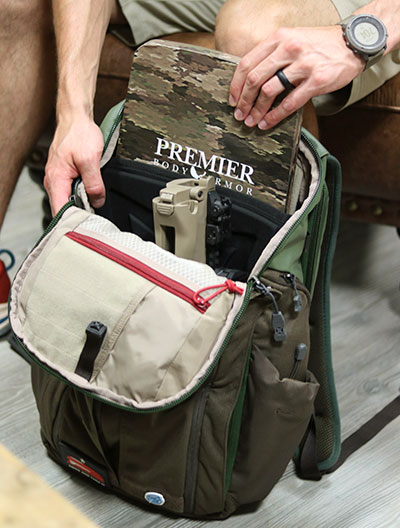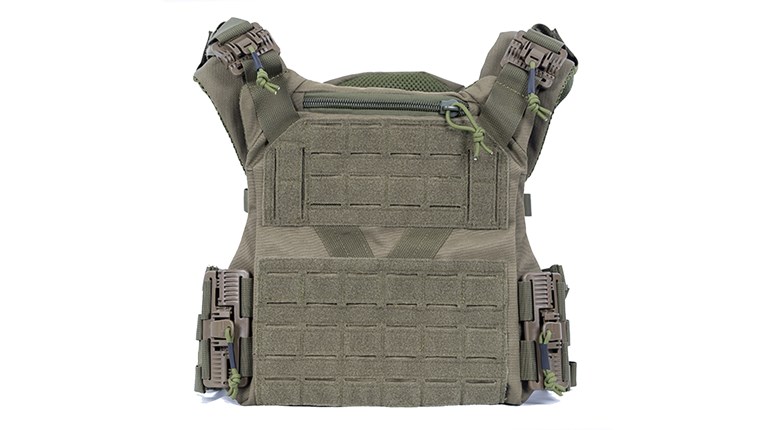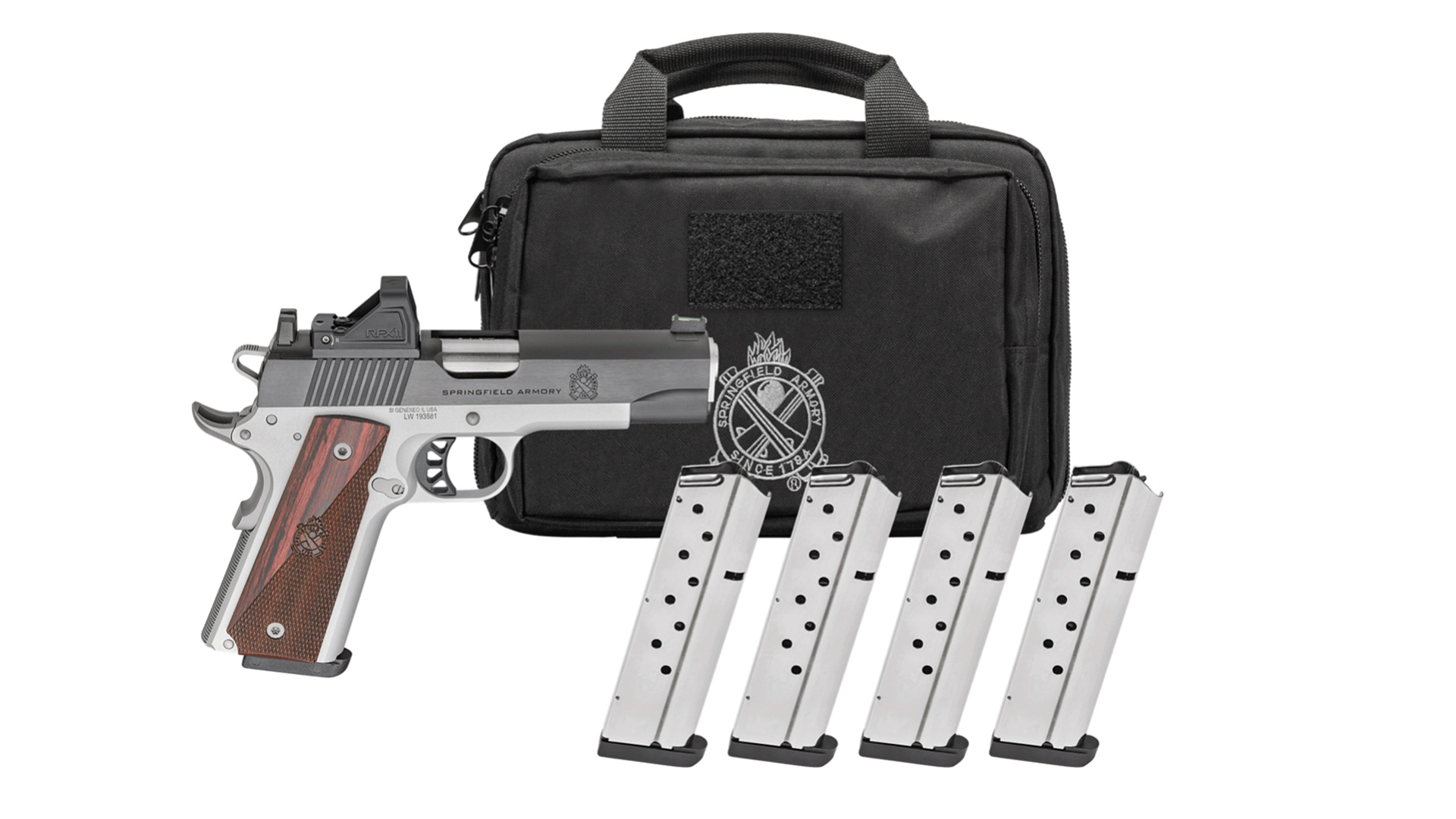
Steel-plate and chain mail armor have long been associated with the knights of the Middle Ages. But, archaeological and written evidence indicate that primitive armors, such as leather and bone, go back at least 4,000 years. A few centuries later, the introduction of bronze and iron metallurgy provided better protection. Even layered silk was once used to protect combatants in some parts of the world. While the steady refinement of blackpowder weapons sped the demise of traditional armor, better steels allowed a limited reintroduction of bullet-protective plating in the trenches of World War I.
Ballistic armor development crept forward through the 20th century, with various metal and synthetic materials used in limited applications during World War II. Individual armor use expanded to ground combatants throughout the Korean and Vietnam Wars. While not always designed to stop bullets, these “flak” vests were nonetheless another step up the ladder for personal protection.
Thanks to advances in synthetic materials and textiles, the post-Vietnam era witnessed dramatic changes in individual armor. While our military transitioned to lighter, more effective, woven-fiber flak vests for fragmentation protection, the law enforcement community began using the same materials to protect officers against handgun bullets. Today, we can all reap the benefits of this slow-rolling, personal body-armor-development train.

Tech
DuPont’s Kevlar, an aramid fiber, was the first widely produced commercial product to provide lightweight, flexible protection against low-velocity firearm projectiles. More recently, the development of ultra-high-molecular-weight polyethylene (UHMWPE) fibers, such as Honeywell’s Spectra, allow for even lighter and potentially better ballistic protection.
These soft armors use multiple layers of woven fabric to resist penetration by slower-moving, blunt bullets. The more layers employed in a design, the higher the level of protection, but with limitations. While you could certainly pile up enough soft armor to protect against high-velocity rifle projectiles, you would end up looking like a giant, immobile tick under the weight and bulk of so much material. Thankfully, rifle plates pick up the slack for chest, spine and side protection against these more powerful threats.

A basic understanding of armor ratings is helpful when sorting through the options before a purchase. The common U.S. standard of reference is published by the National Institute of Justice (NIJ). At the time of this writing, the current NIJ standard is 0101.06, dating to 2008. This standard tells consumers what the highest levels of protection are for various items tested under the organization’s protocol. NIJ’s current standard includes these five levels:
Velocity ranges for levels IIA, II and IIIA are reduced by approximately 50 to 100 fps when testing “conditioned” or used armor under controlled circumstances. Complete descriptions of each level and test methodologies are given in greater detail in the full NIJ publication, available online at ncjrs.gov.
Handgun-protective levels are usually achieved through the use of soft armor, though some lightweight, composite plates are also rated for the same protections. Level III and IV plates are made of harder materials, and are either designed to “stand alone” or be used in conjunction with soft armor of a specified level. NIJ-certified armor should be labeled with threat level, specifics for use and date of manufacture.

Some armor makers offer variations or enhancements of these protection levels. For example, Safe Life Defense offers a “Level IIIA Enhanced” soft armor that is intended to protect against 9 mm armor-piercing and 5.7x28 mm projectiles. This company also markets a very expensive, soft (yes, soft) armor intended to protect against 5.56 NATO M855 “Green Tip” and 7.62x39 mm M67 FMJ projectiles.
Ballistic steels, such as AR500, are the cheapest option for hard rifle plates and can take multiple hits, but they are also the heaviest choice. Ceramic composite plates are lighter but they cost a little more and cannot take as much abuse as steel. Other hybrid plates exist, but these high-tech models are expensive and not commonly found in the commercial market. Sizes vary, but 10x12 (inches) is the most common commercial option for chest and back protection. Shapes include “regular cut,” which has rounded edges, as well as “shooter’s” and “swimmer’s” cuts, which have steeply angled top corners to allow more range of motion and better circulation for the arms.
It is worth noting that when a fast-moving projectile suddenly slams into a very hard surface, it tends to flatten out, fragment and send its jacket and core pieces—spall—in multiple and unpredictable directions. Therefore, protection against spall is recommended. Some plates are coated for this purpose, but spall pads in the form of soft ballistic-protective material can be placed in front of hard plates to reduce this threat, too.

Load Bearing
Newly manufactured, commercially available body armor is most often configured as concealment vests, plate carriers or full-size tactical carriers. Concealment armor carriers are designed to be worn under loose outer garments and are relatively comfortable in moderate or cool climates. They hold soft-armor panels—usually Level IIIA—which cover the torso and typically have a small pocket in front for either a blunt force/stab plate or an additional IIIA insert for sternum-area protection.
Plate carriers can hold soft inserts and/or Level III or IV rifle plates, but the trimmest models lack much protection beyond the plates’ edges. Full-size vests that hold larger IIIA soft panels provide full-torso protection, fronted by hard rifle plates. Both plate carriers and full-size carriers normally have internal pouches for front and back rifle plates and many designs have provisions for soft or hard side protection. Most modern plate and full-size carriers also have some method of pouch attachment for ammunition, medical kits, water carriers and other necessities. MOLLE and PALS have become the go-to modular attachment systems. Armor carriers may also be left “slick,” so that traditional load-bearing equipment can be tailored for specific needs and worn on top.
Decisions, Decisions
Which armor type and carrier system best fits your needs will depend upon how you intend to use it. I have worn each of the above configurations for days, weeks and months at a time in active ground combat or clandestine environments. Not surprisingly, the lighter and less restrictive the system, the more likely one is to wear it.
Properly caring for ballistic vest material is the best way to ensure it takes care of you. Manufacturers’ recommendations should be your primary guide, but in general, keep ballistic materials dry, clean, away from chemicals and sunlight and either stored lying flat or on a hanger.
If your vest will be mothballed until the zombies are scratching at your doors and windows, your main limitations will be storage space and budget. In a worst-case scenario, where you find yourself fighting for your life in a fixed position (such as your house) or against multiple attackers, a full-size tactical carrier will be worth its weight in gold.
But, that same beast of a tunic will not be fun to walk around in regularly, especially after adding your spare ammo, medical gear, etc. to the vest’s soft armor and rifle plate(s). Hopefully, none of us will ever be in a situation that calls for such heavy-duty protection on the home front, but it is available if needed.
Concealment vests and trimmed-down plate carriers are generally more affordable and flexible for periodic or grab-and-go use. Both can easily be stowed behind a truck seat, in a car trunk or in a medium-size gear bag. They can be used together or separately, as situations dictate. Their smaller sizes make them less obvious and better-suited for situations where keeping a low profile is desired. What separately employed, small-plate carriers and concealment vests lack in terms of protection, they make up for in mobility and modularity.
Sourcing
A quick web search will yield more sources for new body armor than most people can stand to sort through. Retailers that cater to law enforcement professionals typically have the most choices and draw from multiple, reputable armor manufacturers. New, U.S.-made armor starts around $400 for basic level IIIA concealment models and approaches $2,000 for exotic or elaborate designs. Outfitting the whole family may not be realistic, but equipping the household’s primary defender is feasible, especially if you view it as a multi-year insurance policy.
I do not have any experience with new body armor from budget-priced, foreign manufacturers. As a rule, I make it a habit to steer clear of any life-sustaining products from countries that go out of their way to harm the United States, but that is based solely on my distrust of evil regimes and not on actually testing the armor they produce.
Used armor shows up from time to time on auction and retail websites or at surplus outlets and police-supply stores (as trade-ins). There are many unknowns with these items, such as how they were stored, what levels of protection they provide or what materials were used in their manufacture. A few outlets inspect, grade and back their used armor, but most sell it only as “collectibles.”
Military surplus armor, especially “flak jackets,” are among the cheapest used options. They are also often the worst cared for and come with the greatest unknowns. Some countries use our NIJ ratings, but most determine their own protection levels that are not exactly comparable to the NIJ system. Used or questionable ceramic and composite hard plates should be closely inspected and X-rayed for cracks or other evidence of abuse or deterioration before use. Poor-condition soft armor and any armor that has been shot or damaged should not be relied upon. The rule of thumb with used or surplus body armor is that its protection will be somewhat diminished at best and significantly degraded at worst.

Odds & Ends
One way to reduce costs is to build your own armor system by shopping for overruns or sale-priced soft inserts and empty carriers. I have assembled several vests this way, spending less than half the cost of new, ready-made models. Multiple sizing systems are used by soft armor and carrier makers, so be sure to verify correct fit before purchasing separate components.
Other, lower-cost armor products may fit your niche, too. Companies like Tru-Spec offer undershirts that hold and conceal front and back soft-armor panels under street clothes. Backpacks with ballistic protective inserts have gained popularity as emergency torso protection and can be worn in the front if need be. Jackets and uniform shirts with soft-armor inserts are also available.
Properly caring for ballistic vest material is the best way to ensure it takes care of you. Manufacturers’ recommendations should be your primary guide, but in general, keep ballistic materials dry, clean, away from chemicals and sunlight and either stored lying flat or on a hanger. After sweating in your vest, turn it inside-out so the panels can air out once you take it off. Rifle plates should also be kept clean and dry. Avoid dropping or striking ceramic or composite rifle plates with anything that could crack them.
While body armor is currently legal to own in all 50 states, laws vary slightly and some jurisdictions do not allow ownership and/or use of products designed to protect against bullets. Committing crimes while wearing body armor tends to increase penalties, and convicted felons are generally prohibited from owning armor. Several websites provide up-to-date rules for each state, but you should verify your local laws before making any big purchases.
Finally, just as sound suppressors do not make a firearm silent, ballistic vests are not “bulletproof.” They are rated to provide specific levels of protection under certain circumstances and do a great deal more than regular clothing, making them worthy of consideration for emergency planning. But, they do not make you invincible. Ultimately, armor or no, the best defense against bullets is to not get shot in the first place.





































